Wing Tips: Boeing v. Airbus
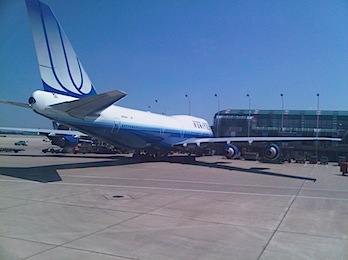
I wanted to take a diversion from our typical posts that have to do with airline miles, hotel points etc and talk about something that fascinated my little mind for a while – how to tell a Boeing apart from an Airbus? For the purposes of this article, we will limit our attention to the traditional jet aircraft from these two aircraft manufacturers, ignoring the regional jets and the McDonald Douglass (MD) planes now owned by Boeing.
A friendly pilot I once sat next to on a flight pointed out to me that looking at the wing tips of the aircraft offers the biggest clue that one needs to know to tell a Boeing from an Airbus plane.
Once one starts from there, one can look for other clues to confirm. I will share these pearls of wisdom here… (for those whose curious minds keep them awake at night pondering this mystery).
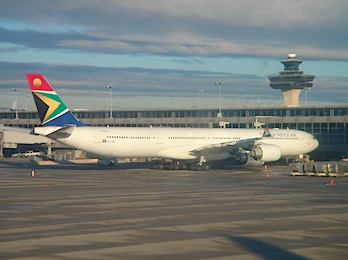
The Big Birds – Four Jets:
Starting with the Big Birds – the massive Jumbo Jets, we need no clues here. There are only three passenger aircraft out there that have four engines. So, when you see an aircraft with four jet engines, it is one of these – Boeing 747, Airbus 340 or Airbus 380
I think I can safely assume that everyone who has ever been to a large international airport in the last 30 years knows a 747 when they see one. I am however attaching a picture for the rest of the folks. Simple clue – the big hump up front that forms the top deck.
The A380 (I have never seen one myself and so don’t have a picture to attach) is also easy as it is the only fully double-deck aircraft.
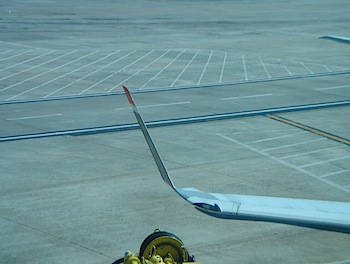
The A340 is also easy to identify (picture attached). It is the only four jet aircraft that is single deck. So, big, long, four jets but only one deck.
The Wing tips:
All other passenger aircraft from these two vendors have two jets (Yes Mom, Boeing has a tri-jet, but it is only used for cargo – no windows is the clue here). The best way to tell them apart is by the tips of their wings. There are four types of wing tips (pictures included):
Regular:
These are the traditional wings. There are no tips at the end. They are seen on all Boeing aircraft except the 747 and none of the Airbus aircraft.
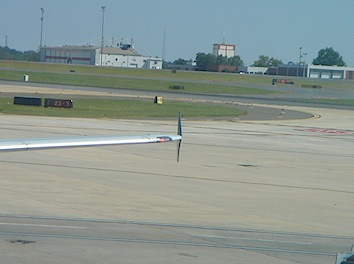
Blended Winglets:
Winglets are a new type of wingtip that are used primarily to increase fuel efficiency. Boeing has winglets that can be seen on their single aisle aircraft – 737 and 757. All Southwest aircraft have wingtips. I have not seen wingtips on Boeing widebody aircraft, but I am told they are coming soon (Boeing 767 and 777).
Airbus recently announced that they will start adding winglets to their new A319, A320, A321 aircraft. They are calling them Sharklets. This will make telling them apart tough.
Wingtip Fence:
These are the relatively tiny triangular winglets one can see in the attached picture. All
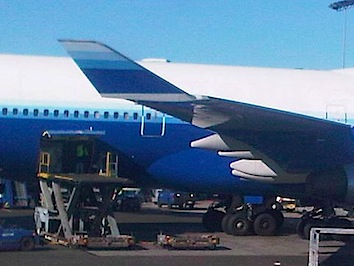
current A318, A319, A320, A321 and A380 aircraft have these devices. This makes telling these
aircraft from others real easy.
Wingtip Endplates:
These are seen on A330, A340 and Boeing 747 aircraft. They are not upturned like winglets, but at an angle. See the picture attached.
Hope this helps. I will post another article soon that tells how to tell a 737, 757, 767 and 777 apart. Hint – its all about the landing gear. Come back soon.
If you liked what you read or feel I missed something, do leave a comment.
– The UnRoadWarrior
Similar Articles:
To get all our posts and articles, sign up for updates vis RSS or email. We also post updates on Twitter and Facebook on Airline Miles, the Airline Industry and other travel related stuff.

Raked winglets as per 767-400, 777-200LR / -300ER / -F, 787 & 747-8. These are triangular extensions added to the wingtips of these and other aircraft. Probably the hardest of the winglets to find by non-avgeeks. Thanks 🙂
@Paulo, Thanks. Do you have pictures you can point me to?
This is a great example of a raked wingtip by the aviation blogger Jon Ostrower aka Flightblogger of Flightglobal.com: http://www.flickr.com/photos/flightblogger/5444870028/in/set-72157625921187877/
I think you may still be able to find great examples on http://www.boeing.com — search 767-400 images. Or, of course, try airliners.net.
Paulo, Thank you!
747s prior to the -400 do not have winglets, unless added aftermarket.